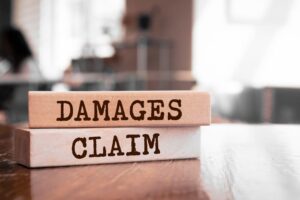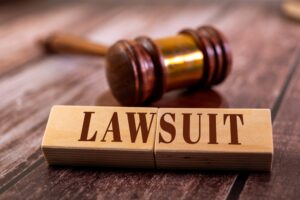After a serious accident someone else caused, you might wonder, “What are the steps in a personal injury lawsuit and how to hold the other party accountable?”
Many people in Virginia who suffer injuries or lose someone they love in an accident caused by someone else’s careless behavior feel overwhelmed by the legal system. A personal injury lawsuit gives you a path to pursue justice and seek compensation for medical costs, lost income, and other losses.
Read on to learn about the process of filing a lawsuit and pursuing compensation. You’ll also learn how an attorney can be an invaluable asset to help you obtain the best outcome possible.
For specific advice and guidance for your case, contact a abogado de lesiones personales near you for a free consultation. They can walk you through the legal process and explain your options. They can also represent you and fight to improve your odds of success.
Programe una consulta gratuita
How do you start a personal injury lawsuit in Virginia?
Starting a demanda por lesiones personales in Virginia involves more than just submitting forms to a court. It’s a step-by-step legal process that begins with preparation and planning. If someone’s carelessness caused your injury, you have the right to seek compensation, but you’ll need to prove it. This early phase can shape the entire outcome of your case.
Step 1: Gather evidence and evaluate the situation
Before any paperwork gets filed, start by collecting the facts. This includes:
- Photos or videos of the accident scene
- Witness contact information
- Registros médicos showing your diagnosis and treatment
- Police or incident reports
- Communication from insurance companies
If you’re physically unable to collect this material right away, a personal injury lawyer can help pull it together for you. They can also track down missing records, contact witnesses, and request footage or reports from public or private sources.
Step 2: Determine who’s responsible
You’ll need to identify the person, business, or other entity that caused the injury. In some cases, this is obvious, like a distracted driver running a red light. But in others, it may involve more investigation. For example, in a Resbalar y caer, you’d need to find out who owned or managed the property and whether they failed to fix a known hazard.
A lawyer can help pinpoint all responsible parties. That can be important, especially if more than one person or company played a role in causing the injury. Holding all liable parties accountable may increase your chance of recovering full compensation.
Step 3: Evaluate your damages
 Virginia law allows you to seek damages for the losses caused by someone else’s negligence. These may include:
Virginia law allows you to seek damages for the losses caused by someone else’s negligence. These may include:
- Facturas médicas (current and future)
- Lost wages and reduced earning ability
- Dolor y sufrimiento
- Daño a la propiedad
- Other out-of-pocket expenses
Understanding the full extent of your damages takes more than a quick glance at a hospital bill. You might need opinions from doctors or economists to estimate the long-term impact of your injury. Lawyers often work with these professionals to make sure no losses go overlooked.
Step 4: Draft and file the complaint
The complaint is a formal legal document that begins your lawsuit. It includes:
- The names of the plaintiff (you) and the defendant (the person or business you’re suing)
- A description of how the injury occurred
- The legal reason you’re holding the defendant responsible (called a “cause of action”)
- A demand for compensation (damages)
Your lawyer prepares this document using precise legal language that fits Virginia’s court rules. The complaint must be filed in the correct court, based on where the injury occurred or where the defendant lives or does business.
Step 5: Serve the defendant
After filing, the defendant must receive a copy of the complaint and a summons that tells them how and when to respond. Virginia law requires proper service, which usually happens through a sheriff’s deputy, process server, or certified mail. The court won’t move forward unless this step is completed the right way.
If the defendant can’t be located or tries to avoid service, your lawyer can use alternative methods, such as publishing a notice in a newspaper, with the court’s permission.
Step 6: Await the defendant’s response
Once served, the defendant usually has 21 days to respond. Their answer may:
- Admit or deny the claims
- Offer defenses (for example, arguing you caused your own injury)
- File counterclaims against you
- Ask the court to dismiss the case entirely
If the defendant doesn’t respond on time, you may be able to request a default judgment. That means the court could rule in your favor automatically. However, this is rare in personal injury cases where the other side usually has legal representation and responds promptly.
Step 7: Work with a lawyer from the start
Hiring a personal injury lawyer can make a major difference in your case. An attorney helps with every step mentioned above:
- Investigating the facts
- Identifying the correct defendant(s)
- Calculating fair compensation
- Drafting legally sound documents
- Filing everything correctly and on time
- Responding to motions or pushback from the other side
A lawyer can also speak with insurance companies on your behalf. These companies often try to offer quick payouts that don’t reflect the true cost of your injuries. By having legal support early on, you can avoid settling for less than your case is worth.
The discovery process in personal injury cases
 Once both sides have filed their initial paperwork, the next stage is called descubrimiento. This part of the lawsuit is all about gathering information from each other to prepare for trial or settlement talks.
Once both sides have filed their initial paperwork, the next stage is called descubrimiento. This part of the lawsuit is all about gathering information from each other to prepare for trial or settlement talks.
Document production and requests
Each side asks the other for documents. That might include accident photos, repair bills, income statements, emails, or any other records that support your version of events.
Medical examinations and expert witness preparation
The defense may ask for an independent medical exam to confirm the extent of your injuries. Your lawyer may also prepare medical professionals or accident reconstructionists to testify on your behalf.
Depositions of parties and witnesses
A deposition is an interview under oath. Lawyers ask questions, and the answers get recorded. You, the defendant, and other witnesses may all take part. This is a key moment to see how someone might testify at trial.
How long does discovery take?
Discovery in Virginia can last several months to over a year, depending on the court’s calendar and how many documents or witnesses are involved.
Factors that can extend or shorten the process
Complicated cases with lots of injuries, many parties, or conflicting stories often take longer. On the other hand, when both sides cooperate and the facts are clear, the timeline may be shorter.
What happens during settlement negotiations?
Most personal injury cases don’t go to trial. Instead, the parties work out an agreement. This section explains how those discussions usually unfold.
Demand letters and initial offers
Your lawyer may start by sending a demand letter to the insurance company, outlining your injuries and what amount would fairly cover your losses. The insurance company typically responds with a lower offer.
Role of insurance companies
Insurance adjusters work to reduce what their company pays. They might question your medical treatment or argue that you share fault. A lawyer can push back and demand a better offer.
Mediation and alternative dispute resolution
Settling can save time and money and give you more control over the outcome. You avoid the stress of a trial and may receive money faster.
Virginia mediation requirements for certain cases
Some courts in Virginia may suggest or require mediation, where a neutral third party helps both sides try to find middle ground. Even if it’s not mandatory, mediation can often help move a stalled case forward.
The trial phase
If the other side refuses to make a fair offer, going to trial may be the only way to pursue the compensation you deserve. This phase involves careful planning and courtroom strategy.
Pre-trial preparations
Lawyers must submit a list of all witnesses and exhibits they plan to use. Each side also reviews what the other side intends to present in court.
Jury selection process in Virginia
The court picks a group of potential jurors, and both sides ask questions to find those who can be fair. Once both sides agree, the final jury is selected.
Opening statements strategy
Each lawyer gives an opening statement to explain what the case is about and what evidence the jury will see. This frames the story for the jurors.
Presenting your case
As the person bringing the lawsuit, you must show the other party’s actions caused your injuries and that you deserve compensation. The standard in Virginia is “preponderance of the evidence,” meaning your side is more likely true than not.
Expert testimony and evidence presentation
You may have doctors, economists, or other professionals explain how the accident happened or how your injuries affect your future. The judge decides what evidence the jury can see.
Cross-examination and defense arguments
The defense will also present their side and try to poke holes in your story. Cross-examinations test the credibility of witnesses and expose weaknesses in the case.
Verdict and judgment
Once both sides rest, the jury talks in private and decides the outcome. This could take hours or days.
Types of damages available in Virginia
A jury may award compensation for medical expenses, lost income, pain and suffering, and more. If the defendant acted with extreme recklessness, the jury might also award punitive damages.
Post-trial motions and appeals process
After the trial, either side can ask the judge to change the verdict or file an appeal. These steps can add time and delay payment, but not every case includes an appeal.
How can a personal injury attorney help you with this process?
 Working with an attorney means you don’t have to handle all the steps alone. Legal support can protect your rights, strengthen your case, and help secure fair compensation.
Working with an attorney means you don’t have to handle all the steps alone. Legal support can protect your rights, strengthen your case, and help secure fair compensation.
Legal experience and case strategy
Virginia follows its own rules on things like contributory negligence, estatutos de limitaciones, and damage caps. A lawyer who knows these rules can structure your case to fit the law.
Maximizing compensation potential
Attorneys look at the long-term effects of your injury and include those in your damages claim. That might involve future medical costs or reduced earning ability.
Avoiding common legal pitfalls
A missed deadline or poorly worded complaint can sink a case. Legal counsel helps you stay on track and avoids these avoidable setbacks.
Resource access and investigation
Strong cases often include professional analysis. For example, an accident reconstruction can show how a crash happened, while a doctor can describe your long-term prognosis.
Gathering comprehensive evidence
Your legal team can request records, interview witnesses, and work with investigators to build a detailed case file.
Managing complex paperwork and deadlines
From court forms to medical releases, personal injury cases involve a mountain of documents. Legal support helps ensure everything gets filed on time and in the right format.
Negotiation and trial advocacy
Insurers often try to minimize payouts or deny valid claims. Your attorney can push back with solid evidence and strong arguments.
Courtroom experience and litigation skills
If the other side refuses to offer a fair settlement, your attorney can take the case to trial and present it effectively in court.
Contingency fee arrangements
Most personal injury attorneys in Virginia work on a contingency basis. You don’t pay upfront. Instead, they receive a portion of what you recover. This aligns their success with yours.
Frequently asked questions about personal injury lawsuits
What is Virginia’s statute of limitations for personal injury cases?
You generally have dos años from the date of the injury to file a lawsuit. Some exceptions apply, such as for minors or hidden injuries.
¿Cuánto cuesta contratar a un abogado de lesiones personales?
Most lawyers use contingency fees, so you don’t pay upfront and only owe legal fees if your case results in compensation.
What should I do after someone causes an accident that hurts me?
Seek medical help immediately, gather evidence if possible, and speak with a lawyer before talking to an insurance adjuster.
How long do personal injury lawsuits take to resolve?
Some cases settle in a few months, while others may take a year or more, especially if they go to trial.
Let our Virginia personal injury lawyers help you with your lawsuit
Having the right legal team makes a major difference in how your personal injury claim unfolds. The abogados en Allen & Allen understand Virginia law, know how to build strong cases, and take pride in fighting for people harmed by someone else’s actions. When we take your case, we take your cause as our own. We’ll work to hold the at-fault party accountable and push for full compensation that reflects the true impact of the accident.
Programe una evaluación de caso gratuita today and learn how we can help you move forward.


